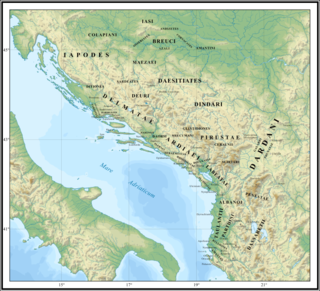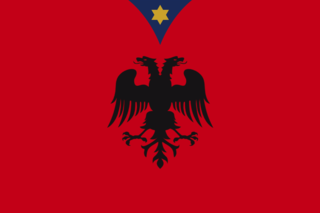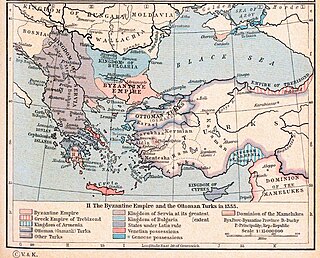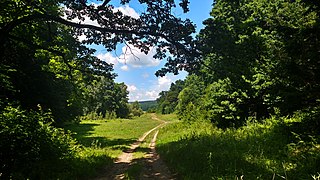
Located in Eastern Europe, Moldova is bordered on the west and southwest by Romania and on the north, south, and east by Ukraine. Most of its territory lies in Bessarabia region, between the area's two main rivers, the Nistru and the Prut. The Nistru forms a small part of Moldova's border with Ukraine in the northeast and southeast, but it mainly flows through the eastern part of the country, separating Bessarabia and Transnistria. The Prut River forms Moldova's entire western boundary with Romania. The Danube touches the Moldovan border at its southernmost tip, and forms the border for 200 metres (656 ft).

Chernivtsi Oblast, also referred to as Chernivechchyna (Чернівеччина), is an oblast (province) in western Ukraine, consisting of the northern parts of the historical regions of Bukovina and Bessarabia. It has an international border with Romania and Moldova. The region spans 8,100 square kilometres (3,100 sq mi). The oblast is the smallest in Ukraine both by area and population. It has a population of 890,457, and its administrative center is the city of Chernivtsi.
Dacian is an extinct language generally believed to be a member of the Indo-European language family that was spoken in the ancient region of Dacia.

The Illyrians were a group of Indo-European-speaking people who inhabited the western Balkan Peninsula in ancient times. They constituted one of the three main Paleo-Balkan populations, along with the Thracians and Greeks.

The origin of the Albanians has been the subject of historical, linguistic, archaeological and genetic studies. The first mention of the ethnonym Albanoi occurred in the 2nd century AD by Ptolemy describing an Illyrian tribe who lived around present-day central Albania.
The Paleo-Balkan languages are a geographical grouping of various Indo-European languages that were spoken in the Balkans and surrounding areas in ancient times. In antiquity, Dacian, Greek, Illyrian, Messapic, Paeonian, Phrygian and Thracian were the Paleo-Balkan languages which were attested in literature. They may have included other unattested languages.

Călărași is a district in the centre of Moldova, with the administrative headquarters in Călărași. As of January 1, 2011, its population was 78,800.

Hîncești is a district of Moldova, with the city of Hîncești as its administrative center. As of 1 January 2011, its population was 122,000.
The term Thraco-Illyrian refers to a hypothesis according to which the Daco-Thracian and Illyrian languages comprise a distinct branch of Indo-European. Thraco-Illyrian is also used as a term merely implying a Thracian-Illyrian interference, mixture or sprachbund, or as a shorthand way of saying that it is not determined whether a subject is to be considered as pertaining to Thracian or Illyrian. Downgraded to a geo-linguistic concept, these languages are referred to as Paleo-Balkan.
The linguistic classification of the ancient Thracian language has long been a matter of contention and uncertainty, and there are widely varying hypotheses regarding its position among other Paleo-Balkan languages. It is not contested, however, that the Thracian languages were Indo-European languages which had acquired satem characteristics by the time they are attested.
Thracology is the scientific study of Ancient Thrace and Thracian antiquities and is a regional and thematic branch of the larger disciplines of ancient history and archaeology. A practitioner of the discipline is a Thracologist. Thracology investigates the range of ancient Thracian culture from 1000 BC up to the end of Roman rule in the 4th–7th centuries AD. It is believed 'modern' Thracology started with the work of Wilhelm Tomaschek in the late 19th century.

Sectorul Centru is one of the five sectors in Chișinău, the capital of Moldova. The local administration is managed by a pretor appointed by the city administration. It governs over a portion of the city of Chișinău itself, and the suburban town of Codru. It is largely populated by Moldovans and Romanians.

The Bessarabia Governorate was a province (guberniya) of the Russian Empire, with its administrative centre in Kishinev (Chișinău). It consisted of an area of 45,632.42 square kilometres (17,618.78 sq mi) and a population of 1,935,412 inhabitants. The Bessarabia Governorate bordered the Podolia Governorate to the north, the Kherson Governorate to the east, the Black Sea to the south, Romania to the west, and Austria to the northwest. It roughly corresponds to what is now most of Moldova and some parts of Chernivtsi and Odesa Oblasts of Ukraine.
Codru Wine Region is a Moldovan wine region. The Central or Codru Zone is the most industrially developed zone of Moldova. This is the site of the greater part of Moldovan vineyards (60%), and the majority of primary winemaking and bottling enterprises are also located here. The forests, hills and rolling countryside typical of this region protect the vineyards from winter frosts and dry summer winds. It is the best area for Feteasca, Sauvignon, Riesling, Traminer rose and Cabernet production. There is also a famous microclimate zone in this region - the Romanesti - the former wine-making Imperial colony of Romanov dynasty. This is the place to sample the best white and sparkling wines, as well as the so-called "divines" and sherries.
The Central Moldavian Plateau, or Codru Massif is a geographic area in Moldova. It is the central and SE part of the Moldavian Plateau. It has elevations that in the N-S direction decrease in altitude from 400 m to under 200 m.

The best known cultural archaeological discoveries from the prehistoric period on the territory of modern-day Serbia are the Starčevo and Vinča cultures dating back to 6400–6200 BC.

Codru formerly known as the Village of Costiujeni, is the second largest suburb of Chișinău city, it is located in the south-west of the Chișinău Municipality. According to the 2014 census the city has over 15000 inhabitants.

Codru Reserve is a scientific reserve in Străşeni District, Moldova. It was founded in 1971 and covers an area of 5,177 hectares.
Kodrion, Codrion or Codrio was an ancient town in southern Illyria, located somewhere to the north of Mount Tomorr, in present-day Albania. The settlement have been presumably identified with the archaeological remains of a fortified site at Kalaja e Irmajt, in the district of Gramsh. The town is mentioned in the events concerning the Illyrian Wars and Macedonian Wars.

Central Bosnia is a central subregion of Bosnia, which consists of a core mountainous area with several basins, valleys and mountains. It is bordered by Bosnian Krajina to the northwest, Tropolje to the west, Herzegovina to the south, Sarajevo to the east and Tuzla to the northeast. It is a part of the Federation of Bosnia and Herzegovina and is divided between the Central Bosnia Canton and the Zenica-Doboj Canton, with a population of around 800,000. The largest city in the region is Zenica, with the Sarajevo-Zenica basin being the most densely populated area. Its highest peaks are Vranica, Šćit and Bitovnja.












